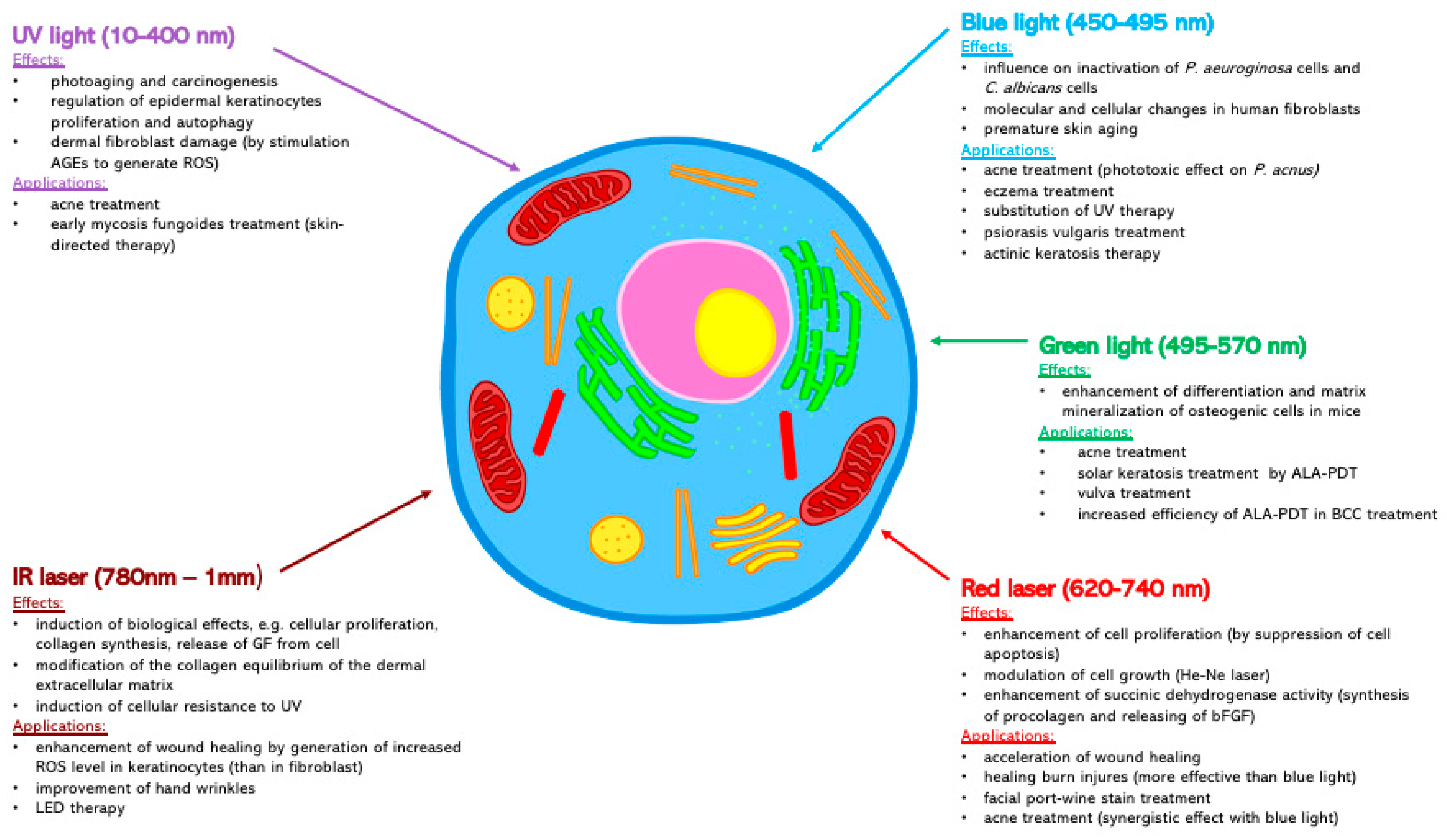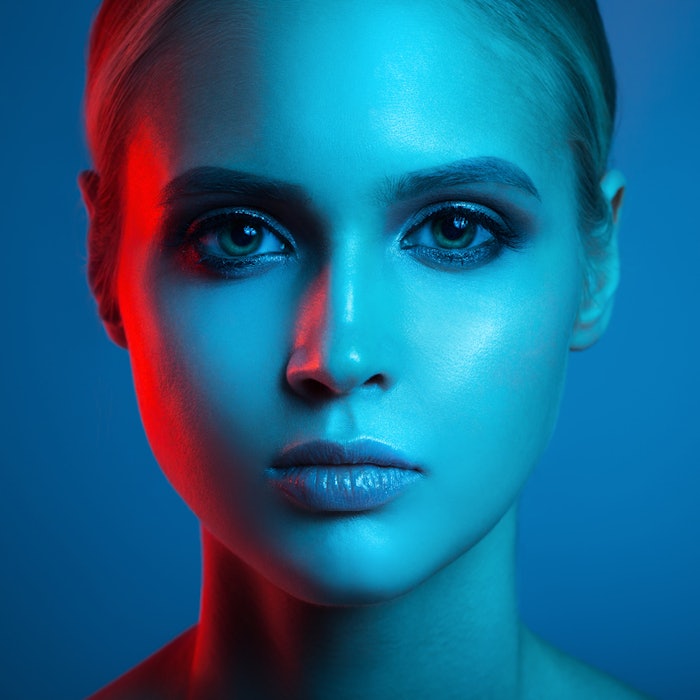Have you ever wondered how the blue light from your phone, computer, or the sun might be affecting your skin? While blue light has become an essential part of modern life and even offers some skin benefits, it can also have surprising effects on your skin cells.
Understanding these effects is crucial because they can influence how your skin ages, heals, and stays healthy. You’ll discover what blue light does to your skin cells, the fine line between its helpful and harmful impacts, and practical steps you can take to protect your skin every day.
Keep reading to learn how to keep your skin glowing and resilient in a world full of blue light exposure.
Blue Light And Skin Aging
Blue light exposure affects skin aging in more ways than many realize. This type of light penetrates the skin deeply, causing changes at the cellular level. Over time, these changes speed up the natural aging process. Understanding how blue light impacts the skin helps us protect it better.
Premature Wrinkles And Fine Lines
Blue light causes damage to collagen and elastin fibers. These fibers keep skin firm and elastic. Their breakdown leads to early wrinkles and fine lines. Even short daily exposure can trigger these effects. The skin loses its youthful texture faster due to this damage.
Oxidative Stress Impact
Blue light increases the production of free radicals in skin cells. Free radicals cause oxidative stress, damaging cell membranes and DNA. This stress accelerates skin aging and dullness. It weakens the skin’s natural defense and repair systems. Over time, oxidative stress leads to visible aging signs and uneven skin tone.
Healing Benefits Of Blue Light
Blue light therapy offers promising healing benefits for the skin. It uses specific wavelengths to improve various skin conditions without harsh chemicals. This therapy is gentle and targets skin cells effectively. Many dermatologists use blue light to treat acne, reduce inflammation, and manage precancerous spots. These benefits make it a popular choice for skin care treatments.
Acne Treatment Effects
Blue light kills acne-causing bacteria deep inside pores. It reduces breakouts by stopping bacteria growth. This light also helps clear oil and dead skin cells. Patients often see fewer pimples and less redness after treatment. It is a safe option for mild to moderate acne cases.
Reducing Inflammation
Blue light calms irritated and inflamed skin. It lowers redness and swelling by soothing skin cells. This effect helps people with conditions like psoriasis or eczema. The light supports faster healing and comfort. It works without harsh medications or side effects.
Targeting Precancerous Spots
Blue light therapy can destroy precancerous skin cells. It is used with special creams that make these cells more sensitive. This treatment reduces the risk of skin cancer by removing harmful cells early. It is effective for spots like actinic keratoses. Regular sessions help keep the skin healthy and safe.
Potential Risks Of Blue Light Exposure
Blue light exposure affects skin cells in various ways. It can cause changes that may harm the skin’s appearance and health. Understanding the potential risks helps protect your skin better. Here are some key concerns related to blue light and skin damage.
Hyperpigmentation Concerns
Blue light can increase melanin production in skin cells. This may lead to dark spots or uneven skin tone. People with darker skin tones are more prone to this effect. Hyperpigmentation caused by blue light can be stubborn and hard to treat. Avoiding excessive blue light exposure can reduce the risk of pigmentation issues.
Skin Irritation And Sensitivity
Exposure to blue light may cause skin irritation for some people. Symptoms include redness, dryness, and itching. Sensitive skin types may react more strongly to blue light. Continuous exposure can weaken the skin’s natural barrier. This makes the skin more vulnerable to environmental damage and sensitivity.
Photoaging And Cancer Risk
Blue light generates oxidative stress in skin cells. This stress damages collagen and elastin fibers. The result is premature wrinkles and fine lines, known as photoaging. Long-term exposure may also increase the risk of skin cancer. Protecting your skin from blue light helps lower these dangers.

Credit: www.mdpi.com
Safe Use Of Blue Light Therapy
Blue light therapy offers many skin benefits but requires careful use. Proper precautions reduce risks and improve results. Safe use protects skin cells and supports healing. Follow expert advice and clear instructions for best outcomes.
Professional Guidance Importance
Consult a dermatologist before starting blue light therapy. A professional can assess your skin type and condition. They recommend the right treatment duration and frequency. This ensures therapy is safe and effective. Avoid self-treatment without expert advice.
Following Usage Guidelines
Use blue light devices exactly as instructed. Overuse can cause skin irritation or damage. Stick to recommended session lengths and intervals. Avoid exposure to direct sunlight right after treatment. Careful use helps prevent side effects like redness or dryness.
Hydrating The Skin
Blue light therapy can dry out your skin. Apply a gentle moisturizer after each session. Hydrating skin supports healing and reduces irritation. Drink plenty of water to keep skin healthy from inside. Well-moisturized skin reacts better to blue light.
Comparing Blue Light With Other Therapies
Blue light therapy offers unique benefits for skin treatment, especially for acne and inflammation. Comparing it with other light therapies helps understand its strengths and limits. Different light therapies work by targeting skin cells in diverse ways. Each therapy suits particular skin concerns and conditions.
Red Light Therapy Benefits
Red light therapy uses longer wavelengths than blue light. It penetrates deeper into the skin layers. This stimulates collagen production, improving skin firmness and texture. Red light reduces inflammation and speeds up healing. It helps with wrinkles, scars, and sun damage. Unlike blue light, it does not kill bacteria but supports skin repair. Red light therapy suits aging and sensitive skin well.
Combining Treatments For Better Results
Combining blue and red light therapies can enhance skin benefits. Blue light targets acne-causing bacteria and reduces inflammation. Red light promotes healing and skin rejuvenation. Using both reduces downtime and improves overall skin health. Dermatologists often recommend this combo for clearer and smoother skin. Treatment plans can be customized based on skin type and goals. This approach maximizes effects while minimizing side effects.

Credit: skincarebutik.com

Credit: www.cosmeticsandtoiletries.com
Frequently Asked Questions
Does Blue Light Damage Skin Cells?
Blue light can cause oxidative stress, leading to premature skin aging and cell damage. Excessive exposure may increase wrinkles and pigmentation.
Are Blue Lights Good For Your Skin?
Blue light can benefit skin by treating acne, reducing inflammation, and targeting precancerous spots. Use it carefully to avoid irritation or pigmentation.
How Long Does It Take For Blue Light To Damage Skin?
Blue light can start damaging skin cells within hours of exposure. Long-term effects like aging appear after repeated, prolonged exposure over months or years.
What Are The Negative Side Effects Of Blue Light?
Blue light exposure can cause premature skin aging, oxidative stress, hyperpigmentation, temporary irritation, and may increase photoaging risk.
Does Blue Light Cause Skin Cell Damage?
Blue light can cause oxidative stress, leading to premature skin aging and cell damage over time.
How Does Blue Light Affect Skin Aging?
Blue light may speed up wrinkles and fine lines by breaking down collagen in the skin.
Conclusion
Blue light affects skin cells in both positive and negative ways. It can help treat acne and reduce inflammation. Yet, too much exposure may cause skin damage and aging. Protect your skin by limiting blue light time and using proper skincare.
Seek advice from a dermatologist for safe treatment options. Understanding blue light’s effects helps you care for your skin better. Balance is key to keeping skin healthy and glowing.
 Skip to content
Skip to content